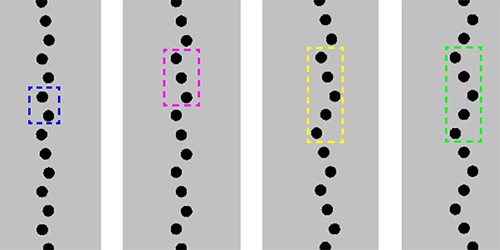Inducing Instabilities with a Magnetic Field
By exposing specially designed materials to external fields, physicists can elicit reversible changes in the material’s configuration. For example, cycling the temperature of a collection of oil and water droplets causes the drops to repeatedly assemble into long chains and disassemble again (see Synopsis: Reversible Self-Assembly of Macroscopic “Polymers”). Now Stephan Rudykh, from the University of Wisconsin-Madison, and colleagues augment the list of programmable materials to include a polymer matrix embedded with magnetic particles. The team finds that exposure to a magnetic field induces tunable patterns in this so-called magnetoactive material that could be used to remotely control the phononic and mechanical properties of a material.
Rudykh and colleagues consider a strip of a magnetoactive polymer—a material that deforms when subjected to a magnetic field—comprising an elastic matrix embedded with evenly spaced magnetic particles. Using numerical simulations, the researchers predict that a magnetic field can deform the composite, inducing an instability in the arrangement of the particles. Depending on the field strength, different particle patterns form, some periodic and some quasiperiodic. Those patterns repeat in units of two particles for the weakest fields, corresponding to the lowest applied stresses, and five particles for the strongest fields and stresses. The researchers verified their predictions experimentally for one field strength.
Similar instability patterns have been observed in mechanically deformable materials loaded with particles. However, in those cases, inducing the pattern required direct contact with the material. In contrast, Rudykh and colleagues demonstrate a method for inducing pattern change remotely. Remote actuation is a desirable property for the long-term goal of developing materials for building untethered robots, Rudykh says.
This research is published in Physical Review Letters.
–Katherine Wright
Katherine Wright is a Senior Editor for Physics.




